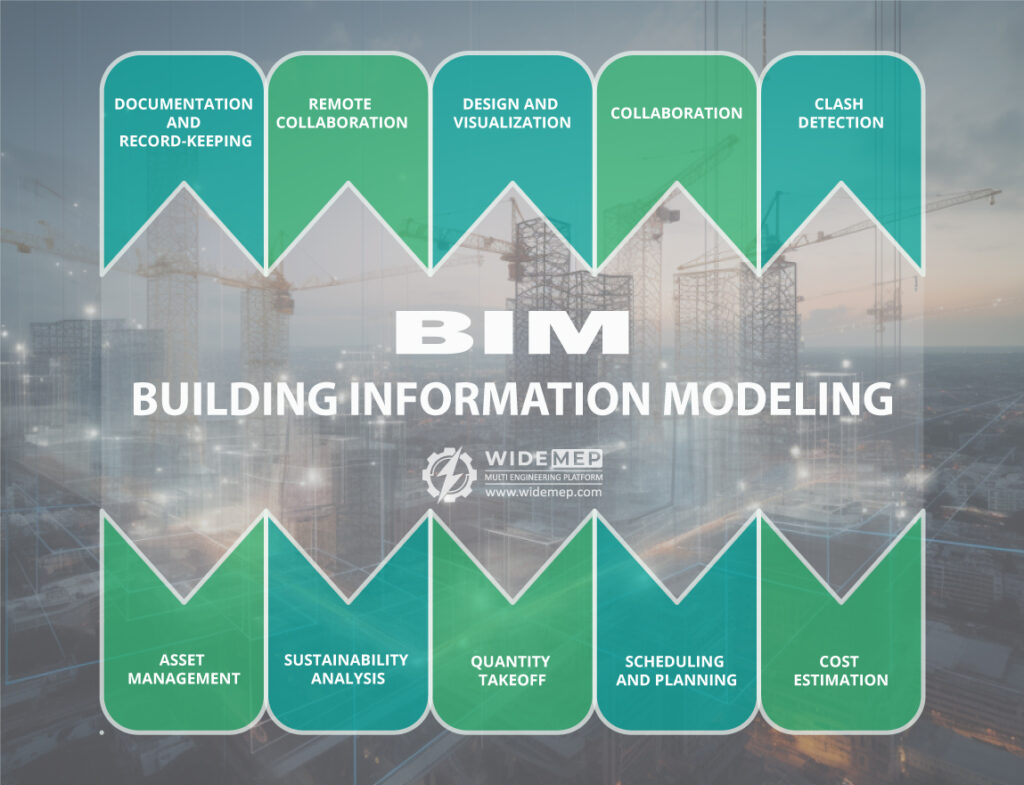How is BIM (Building Information Modeling) used in civil engineering projects?
Building Information Modeling (BIM) is a powerful digital technology that has transformed the way civil engineering projects are planned, designed, and executed. Here’s how BIM is used in civil engineering projects:

Design and Visualization:
BIM enables civil engineers to create a detailed, 3D digital representation of the entire project, including buildings, infrastructure, and terrain. This 3D model provides a realistic visualization of the project, allowing stakeholders to better understand the design and layout. It helps identify potential clashes and design issues early in the process.
Collaboration:
BIM promotes collaboration among different project stakeholders, including architects, structural engineers, MEP (Mechanical, Electrical, Plumbing) engineers, surveyors, contractors, and owners. They can work on a centralized BIM model, share information in real-time, and coordinate their efforts more effectively.
Clash Detection:
BIM software can automatically detect clashes and conflicts within the project design. For example, it can identify instances where plumbing pipes intersect with structural elements or where electrical conduits clash with HVAC systems. This early clash detection helps prevent costly on-site rework and delays.
Cost Estimation:
BIM tools can generate accurate cost estimates based on the 3D model, materials, and labor rates. This allows project owners to have a more precise understanding of the project’s budget and make informed financial decisions.
Scheduling and Planning:
BIM can integrate scheduling and project planning data into the model. This helps in creating construction sequences, optimizing workflows, and ensuring that project milestones are met on time.
Quantity Takeoff:
BIM software can automatically calculate material quantities based on the digital model, making it easier to generate bills of quantities and procurement lists.
Sustainability Analysis:
BIM can be used to perform energy and sustainability analyses. Engineers can simulate energy usage, daylighting, and thermal performance to design more environmentally friendly and energy-efficient buildings and infrastructure.
Asset Management:
Beyond construction, BIM is valuable for facility management. The digital model can include data on each component of the project, aiding in maintenance, repairs, and renovations throughout the facility’s lifecycle.
Documentation and Record-Keeping:
BIM can automatically generate construction documents, drawings, and reports from the digital model, reducing manual documentation efforts and minimizing errors.
Remote Collaboration:
BIM facilitates remote collaboration, allowing team members to work on the project from different locations. This has become especially important in today’s globalized work environment and during times when on-site presence may be limited.
In summary, BIM is a comprehensive approach that uses digital models and data to enhance the design, construction, and management of civil engineering projects. It improves collaboration, reduces errors, enhances visualization, and leads to more efficient and cost-effective project delivery. BIM has become an essential tool in the modern civil engineering industry, helping professionals meet the growing complexity and sustainability requirements of today’s projects.
 widemep.com
widemep.com